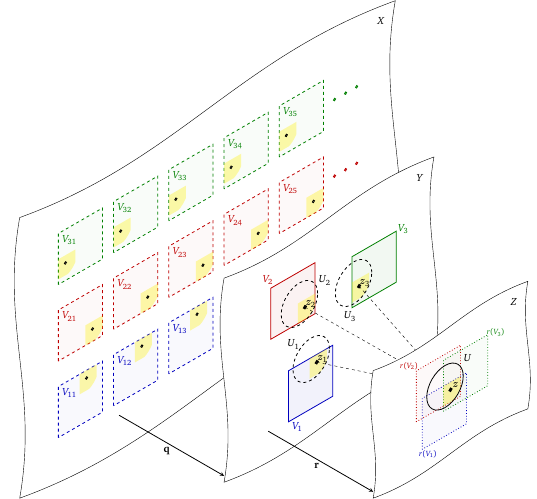Section 53: Problem 4 Solution
Working problems is a crucial part of learning mathematics. No one can learn topology merely by poring over the definitions, theorems, and examples that are worked out in the text. One must work part of it out for oneself. To provide that opportunity is the purpose of the exercises.
James R. Munkres
Let
and
be covering maps; let
. Show that if
is finite for each
, then
is a covering map.
is continuous and surjective. For each
there is an open neighborhood
of
evenly covered by
, that is
is the union of disjoint open sets
in
each homeomorphic to
where
is a homeomorphism. Further, let
be such that
. There is an open neighborhood
of
evenly covered by
. Then
is open in
(
is an open map, see the last paragraph on page 336) and
. Since there are finite number of
’s,
is an open neighborhood of
.
We claim that
is evenly covered by
. Indeed, since
is evenly covered by
,
, as an open subset of
, is evenly covered by
where slices are
(
and
is a homeomorphism for each
). Further, for every
,
(because
is a homeomorphism and
), i.e.
is an open subset of
evenly covered by
, hence,
is evenly covered by
(similar argument as above for
). Note that if
, the slices of
and
are disjoint, because
and
where
and
are disjoint. Overall,
is the disjoint union of open subsets of
, where each
is homeomorphic to
via the corresponding
, and
is a homeomorphism. See Figure 1↓.

